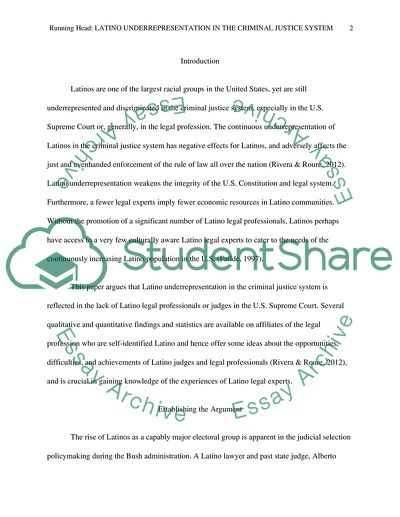Cite this document
(“Latinos underepresentation in the criminal justice system are reflect Research Paper”, n.d.)
Retrieved from https://studentshare.org/miscellaneous/1649621-latinos-underepresentation-in-the-criminal-justice-system-are-reflect-in-the-lack-of-latinos-judges-in-the-united-states-supreme-court
Retrieved from https://studentshare.org/miscellaneous/1649621-latinos-underepresentation-in-the-criminal-justice-system-are-reflect-in-the-lack-of-latinos-judges-in-the-united-states-supreme-court
(Latinos Underepresentation in the Criminal Justice System Are Reflect Research Paper)
https://studentshare.org/miscellaneous/1649621-latinos-underepresentation-in-the-criminal-justice-system-are-reflect-in-the-lack-of-latinos-judges-in-the-united-states-supreme-court.
https://studentshare.org/miscellaneous/1649621-latinos-underepresentation-in-the-criminal-justice-system-are-reflect-in-the-lack-of-latinos-judges-in-the-united-states-supreme-court.
“Latinos Underepresentation in the Criminal Justice System Are Reflect Research Paper”, n.d. https://studentshare.org/miscellaneous/1649621-latinos-underepresentation-in-the-criminal-justice-system-are-reflect-in-the-lack-of-latinos-judges-in-the-united-states-supreme-court.


